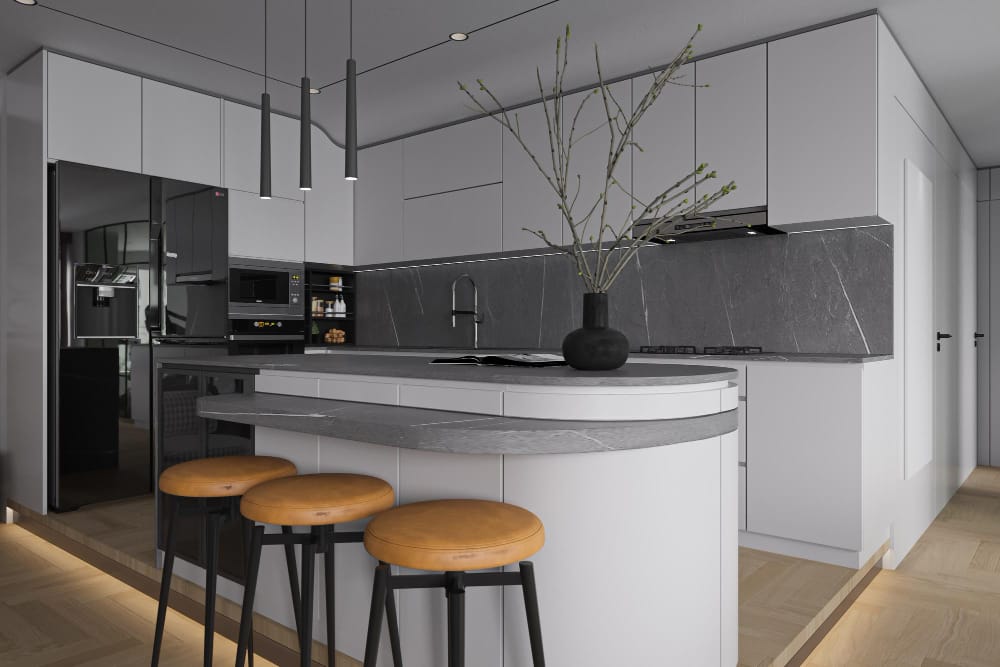I’ve done more kitchen remodels than I can count—and I’ve made just about every mistake in the book. But few things humble a home improvement guy faster than thinking you’ve picked the perfect countertop… only to realize you didn’t ask the right questions.
Enter: Dekton countertops. I had heard the hype—ultra-durable, modern, almost indestructible. So naturally, I thought, “Perfect. Let’s throw it in.” Turns out, I learned a few things the hard way. And now? I wouldn’t go back.
So if you’re thinking about using Dekton in your kitchen, let me save you some growing pains with these five hard-earned lessons.
1. Yes, It’s Heat-Resistant—But Don’t Get Too Confident
I’d read that Dekton is incredibly heat-resistant. So what did I do? Set a fresh-from-the-oven cast iron pan directly on the surface during install day… to show off.
Did the Dekton crack? Nope. Chip? Not even close.
But what I didn’t count on? The pan left a subtle discoloration from the scorching oil on the bottom. Totally cosmetic, but still—a gentle reminder: just because it can take the heat doesn’t mean you should push it.
🔥 Lesson learned: Use a trivet. Always. Even superheroes have limits.
2. Cutting Directly on It Will Destroy… Your Knife
Dekton is harder than most natural stones. So in a moment of macho renovation energy, I diced veggies straight on the counter.
The Dekton? Untouched.
My brand-new chef’s knife? Ruined.
Think of it like this: Dekton is a countertop and a sharpening stone in one. Great for durability, bad for blade longevity.
🔪 Lesson learned: Treat it with respect. It doesn’t need protection—but your tools do.
3. It’s Nearly Bulletproof—but It Can Chip (If You Try Hard Enough)
I learned this one dropping a ceramic serving bowl edge-first onto a corner. That bowl didn’t survive. But neither did that sharp countertop edge.
Dekton is incredibly dense and impact-resistant… across the flat surface. Corners and edges, however? A little more vulnerable.
🛠️ Lesson learned: Ask your installer about rounded edges or chamfered profiles to avoid fragile points.
4. Installation Is Not a DIY Moment
I’m no stranger to heavy lifting or complicated installs—but Dekton installation? That’s another beast.
The slabs are thinner than granite but extremely dense—meaning they don’t flex at all. One wrong lift or uneven cabinet base and you’re looking at a crack before the first plate hits the shelf.
📏 Lesson learned: Hire certified Dekton installers. It’s not just about getting it in—it’s about getting it perfect.
5. It Looks Cold… But Feels Surprisingly Warm
I was worried Dekton would look too modern, too cold—like something from a spaceship kitchen. But paired with wood accents, warm lighting, and the right cabinetry?
It turned out to be one of the most visually versatile materials I’ve ever used. The soft matte finishes, subtle veining, and clean lines gave the kitchen a sleek-but-welcoming vibe.
🎨 Lesson learned: Don’t let the high-tech reputation fool you. With the right design, Dekton can feel just right.
Final Thoughts: Would I Choose It Again?
Absolutely. Despite a few bumps in the road (and a chipped corner I still blame on gravity), Dekton countertops have held up better than almost anything I’ve installed.
They’re:
Durable
Low-maintenance
Beautiful in a minimalist, high-end way
Resistant to heat, stains, scratches, and UV light
But the key is knowing how to work with the material—and not treating it like it’s magic. Because even the best surfaces come with a learning curve.
So if you’re dreaming about a kitchen that can keep up with real life? Dekton might just be your kind of countertop. Just maybe don’t test it with a frying pan. Trust me on that one.

